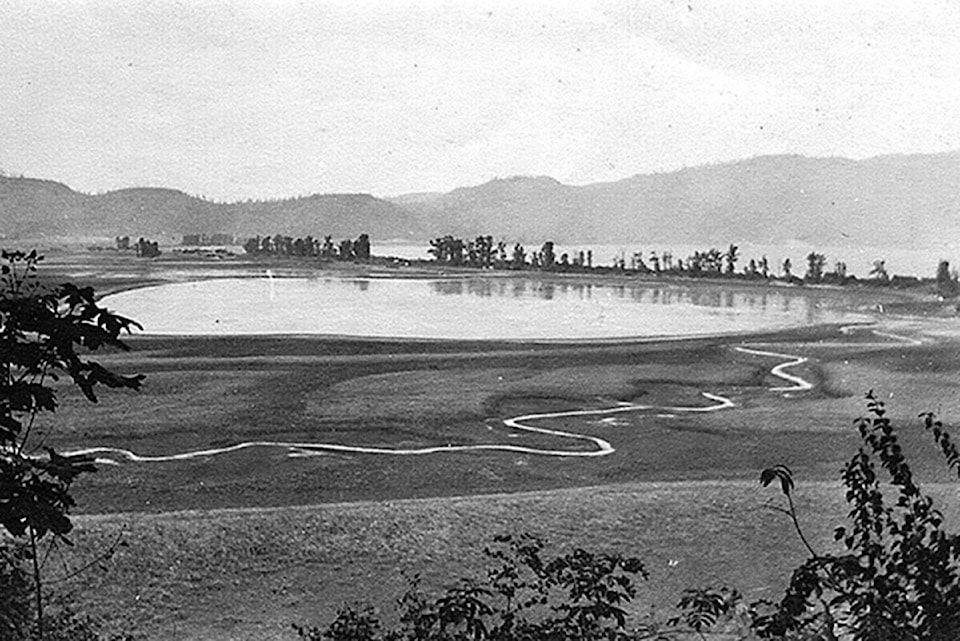Once a fertile lake for local Indigenous life, European settlers drained Sumas Lake in the early 20th century to transform the shallow bed into the region’s agricultural powerhouse.
Here are some quick facts about Sumas Lake and its history:
- Sumas Lake was formed by receding glaciers more than 8,000 years ago.
- The large lake between Abbotsford and Chilliwack was settled by the Sema:th peoples as far back as 400 BC, with a large community living there in the mid-1840s.
- Europeans began moving to the region in large numbers in the early 1900s. Homesteaders disliked the lake’s characteristics (regular flooding, shallow wetlands, swamps, mosquitoes) for farming.
- Sumas Lake was drained and the Vedder canal was built in the early 1920s, using a pump station to divert the lake’s in-flowing rivers for irrigation and allow European farmers to access the fertile soil. It was described as an engineering marvel at the time.
- Over the next 10 years, thousands of acres of some of the most productive farmland was created in the Lower Mainland.
- Barrowtown Pump Station was built in the early 1980s for $27 million. It’s the second busiest pump station in North America; four pump engines running full tilt can pump 500,000 gallons of water a minute.
- The Nooksack River breached in 1990, swamping the Whatcom Road interchange and the western portions of Sumas Prairie, and shutting down all traffic on Highway 1 for 26 hours
- The U.S. river carries water from Mount Baker to the Puget Sound near Bellingham, but when it breaches, the floodwater flows north towards the Sumas Prairie
- An international task force was created after the 1990 event to try and prevent a future disaster from occurring, but was inactive from 2011 to 2018. It was called a one-in-35-year event.
- One 1995 study found that a larger “avulsion” flood event could change the course of the river permanently, diverting its flow north into the former Sumas Lake, draining into the Fraser River
- A new task force was formed with provincial officials in 2019, with the City of Abbotsford being granted $250,000 in federal monies a study looking at past data to develop a plan to mitigate flooding. The study was meant to open discussions with U.S. officials on how to manage Nooksack.
RELATED: The Fraser River doesn’t pose the only flood threat to Abbotsford
RELATED: Keeping the lake at bay in Abbotsford
RELATED: Nooksack River flood risk study gets go-ahead after years of task force inaction
